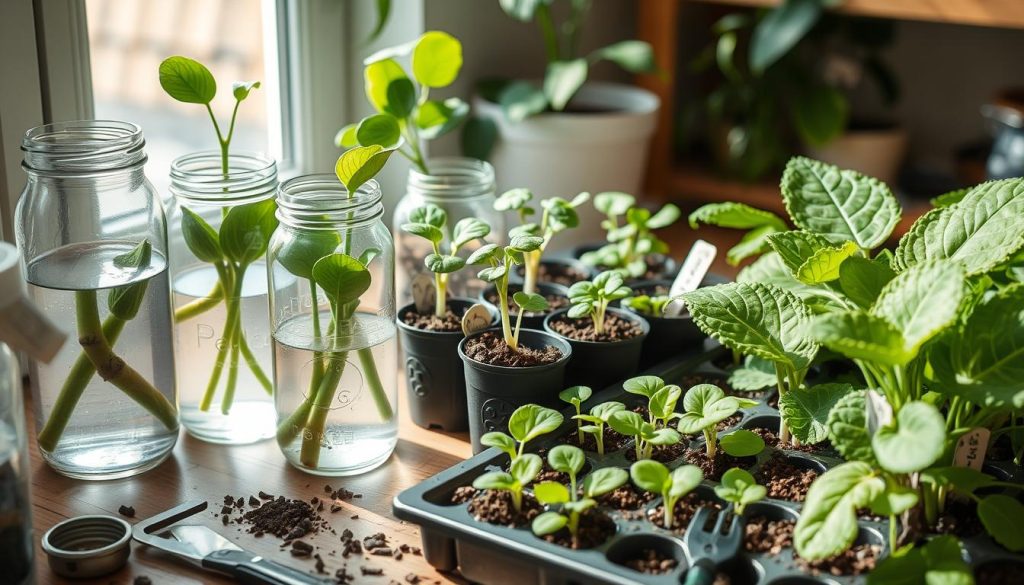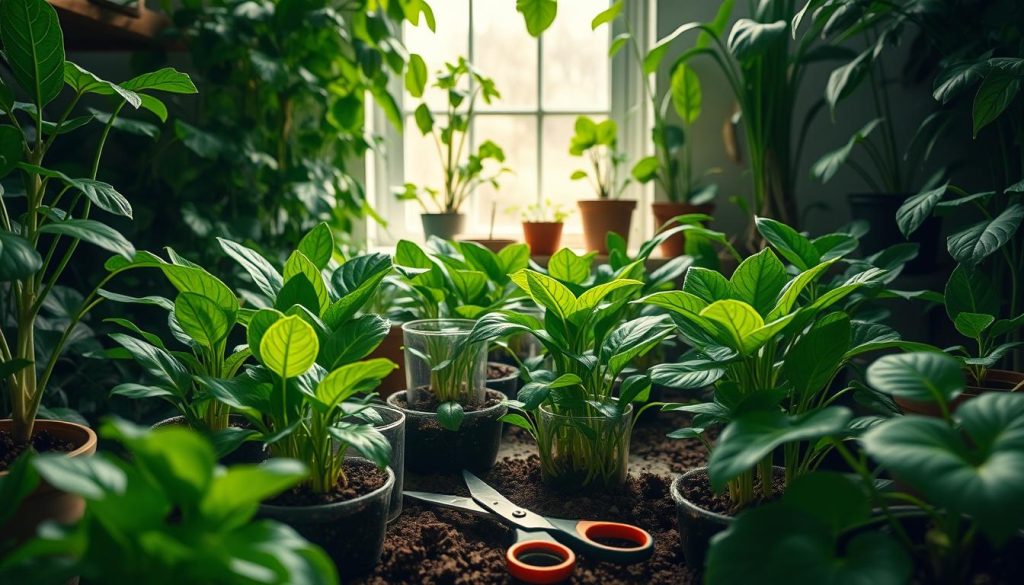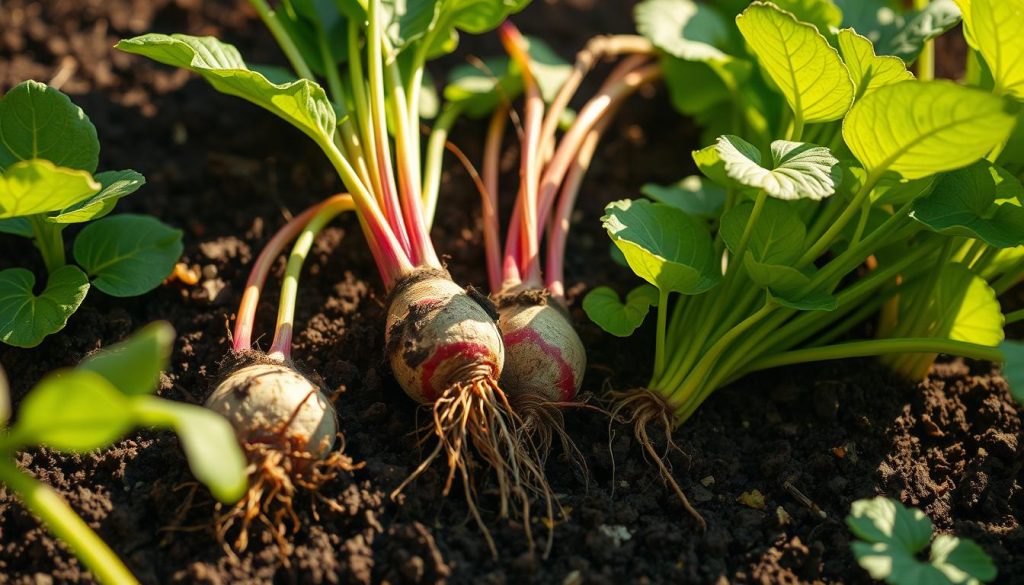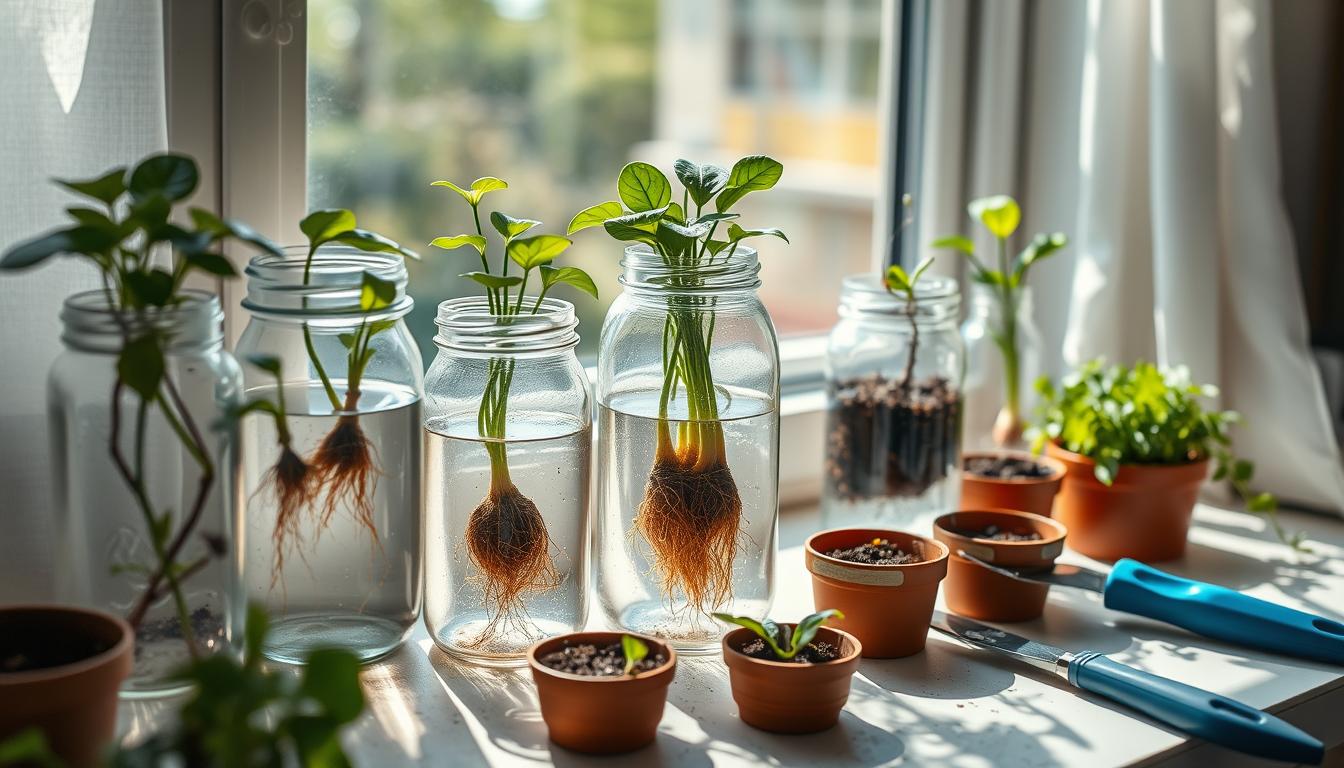I’m excited to share the basics of growing plants from cuttings. This method is simple and saves money. It’s a great way to learn about plant growth and share plants with others.
Starting with plant cuttings is fun and rewarding. You’ll need a few tools and materials to begin. I’ll guide you through each step of growing plants from cuttings.
Whether you’re new to gardening or experienced, growing plants from cuttings is beneficial. I’ll cover the basics, including the benefits and how to succeed. Let’s dive into the world of plant propagation together.
Understanding the Basics of Plant Cuttings
Plant propagation methods are a great way to share plants with friends and family. Rooting plants from cuttings is a popular technique. It lets you create new plants from a single parent plant. This can be a cost-effective and efficient way to propagate your favorite species.
There are several types of cuttings for propagation, including stem, leaf, and root cuttings. Each type has its own advantages and disadvantages. The choice depends on the plant species and the desired outcome.
What are Plant Cuttings?
Plant cuttings are sections of a plant taken from the parent plant to grow a new one. They can be stems, leaves, or roots. The cutting is usually taken from a healthy part of the plant.
Why Propagate from Cuttings?
Propagating from cuttings is a great way to get multiple plants from one parent plant. It’s useful for sharing plants or creating new ones for your garden. This method also helps preserve the genetic traits of the parent plant. This is important for species that are hard to propagate otherwise.
Types of Cuttings for Propagation
There are several types of cuttings for propagation, including:
- Stem cuttings: These are cut from the stem of the plant and can be used to propagate a wide range of species.
- Leaf cuttings: These are cut from the leaves of the plant and are often used to propagate species that have thick, fleshy leaves.
- Root cuttings: These are cut from the roots of the plant and are often used to propagate species that have thick, woody roots.

Choosing the Right Plants for Propagation
Choosing the right plants is key for successful plant propagation. Start with easy-to-propagate plants like succulents and herbs. These are great for beginners and can be grown using vegetative propagation methods.
Spider plants and snake plants are excellent for beginners. They are easy to propagate and can help you get started.
When picking plants, think about the season and the plant’s growth cycle. Some plants do better in certain seasons. Make sure to research the needs of the plants you want to propagate.
Also, choose healthy plants with good cuttings. Look for plants with strong stems, bright leaves, and no pests or diseases.
Best Plants for Beginners
- Succulents, such as aloe vera and echeveria
- Herbs, such as basil and mint
- Houseplants, such as spider plants and snake plants

Seasonal Considerations
Seasons matter when propagating plants. Spring and summer are best for plants that grow actively. Other plants can be propagated all year. Knowing the plant’s growth cycle and the season can help you succeed.
Preparing Your Cuttings for Planting
To successfully propagate plants, you need to prepare your cuttings right. This means getting the right tools and materials, taking healthy cuttings, and getting them ready for rooting. Clean and sharp tools are key to prevent infection and help growth.
Plant cloning needs careful attention and the right stuff. Here’s what to do:
- Gather clean and sharp tools, like pruning scissors or a knife, and a pot or tray with a well-draining medium.
- Choose healthy stems with lots of leaves, and cut them from the parent plant at a 45-degree angle.
- Trim the lower leaves, leaving a few at the top, and dip the cut end in rooting hormone for better rooting chances.

By following these steps and using the right techniques, you can boost your chances of successful plant cloning. You’ll enjoy growing new plants from cuttings.
Rooting Your Cuttings
Choosing the right medium is key when rooting plants from cuttings. A mix of soil and perlite is great for houseplants. It keeps the soil moist and lets air in, helping your cuttings grow strong roots.
Place your cuttings in a warm, humid spot with indirect light. Covering them with a clear bag or cloche helps keep moisture in. Watch for white roots or new growth to know they’re rooting well.
Common Rooting Media
- Water: Works well for plants like African violets and begonias.
- Soil: Good for most houseplants, including herbs and succulents.
- Perlite: Prevents waterlogged soil and promotes healthy roots.
Follow these tips and use the right medium to successfully propagate your houseplants. Rooting from cuttings is a great way to grow more plants.
Transplanting Your Rooted Cuttings
When your cuttings have strong roots, it’s time to move them to individual pots or the garden. This step needs careful attention to help the new plants grow well. By using the right plant propagation tips, you can boost your chances of success in vegetative propagation and cloning.
Before moving the cuttings, check if they have a solid root system. This can take weeks to months, depending on the plant and growing conditions. When transplanting, be gentle with the roots to prevent damage. Plant the cutting at the same depth as before.
After transplanting, give the new plants the right care. This includes enough water, fertilizing, and pruning. Here are some important tips to remember:
- Water the plants well after transplanting and keep the soil moist but not too wet.
- Fertilize the plants often with a balanced fertilizer to support growth.
- Prune the plants as needed to keep their shape, promote growth, and encourage fruiting or flowering.
By following these tips and caring for your plants, you can enjoy the fruits of your labor. Be patient and gentle with the new plants. If you face any issues, don’t hesitate to ask for help.
Tips for Successful Plant Propagation
Starting your plant propagation journey is exciting. It’s all about trying new things and learning as you go.
Make sure to avoid common mistakes. Don’t take cuttings from sick plants or neglect the right growing conditions. Look for help from resources and gardening communities.
Join online forums or local gardening groups. Talk to experienced propagators for advice. Also, check out books, workshops, and tutorials to learn more. The more you know, the better you’ll get at it.
Don’t hesitate to try new methods and explore different plants. Every success will make you more confident. With patience and a love for learning, you’ll become a skilled propagator.

